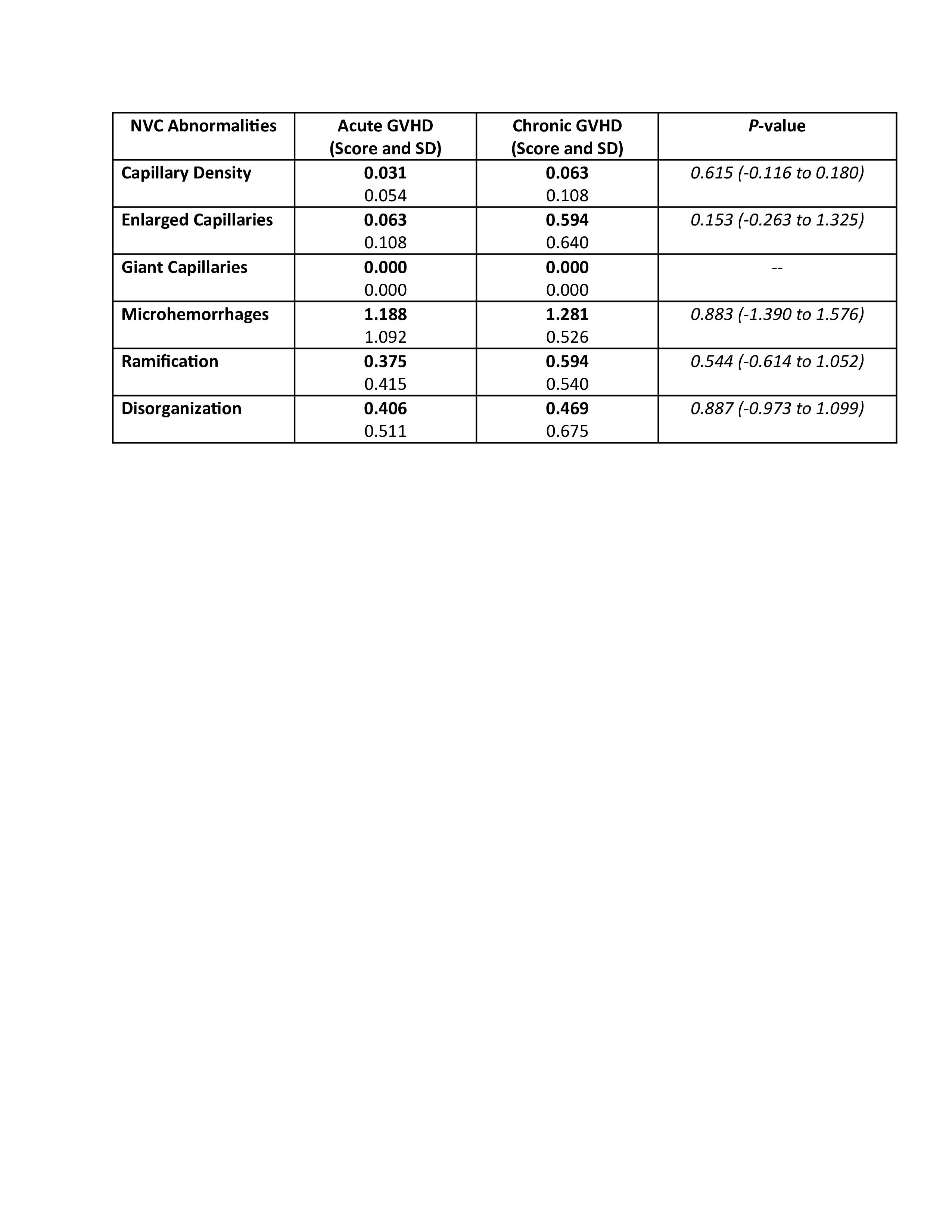Session Information
Session Type: Poster Session A
Session Time: 10:30AM-12:30PM
Background/Purpose: Cutaneous involvement in systemic sclerosis (SSc) and chronic sclerodermoid graft versus host disease (GVHD) is visibly indistinguishable and while characteristic nailfold videocapillaroscopy (NVC) patterns are used for prognosticating SSc, utility of NVC for cutaneous GVHD has not been explored. Literature describing NVC in patients with cutaneous graft versus host disease (GVHD) appears to present conflicting data ranging from minor insignificant NVC findings to severe capillary loss, enlarged capillaries with neovascularization and abundant microhemorrhages mimicking capillary leak syndrome. Further study of NVC in GVHD patients is required to investigate changes in capillary architecture during transplant rejection and to identify any microvascular level differences between acute and chronic GVHD.
Methods: Patients with GVHD were recruited from the Mayo Clinic Jacksonville Dermatology clinic, FL based on diagnostic pathology reports. 32 records were screened. Participant information included demographics, type of transplant, pathology findings, conditioning, and anti-rejection regimens, acute or chronic GVHD and degree and type of cutaneous involvement. NVC was performed at time of enrollment using the 2nd-5th digits of both hands. Capillary morphology, density, organization, microhemorrhages, and ramifications of each nailbed were recorded. The study was approved by the Mayo Clinic Institutional Review Board.
Results: A total of 8 patients who received allogeneic stem cell transplant and were diagnosed with GVHD, based on pathology and clinical presentation, were enrolled, and underwent NVC. 50% of the patients (4/8) had pathological confirmation of acute GVHD while 50% (4/8) had chronic GVHD confirmed on biopsy. 63% of the patients were female, 75% Caucasian and 13% African American. The mean age was 69 and 66 years for acute and chronic GVHD patients respectively. The mean time to transplant was 4.25 months for acute GVHD and 21 months for chronic GVHD. There were more enlarged capillaries ( >20 microns but < 50 microns in diameter) and ramifications in chronic GVHD than in acute GVHD patients (Table 1). Both acute and chronic GVHD patients had numerous microhemorrhages (Image 1) with similar elevation of NVC score. Both subsets had comparable disorganized architecture (Image 2).
Conclusion: Acute and chronic GVHD both have numerous microhemorrhages while more enlargements and ramifications were observed in chronic GVHD. These morphological microvascular changes noted in acute and chronic GVHD patients indicate diagnostic value of NVC in these unique subsets.
To cite this abstract in AMA style:
Mumtaz S, Berianu F, Wang B, Cane B, Sokumbi O. Microvascular Differences Between Acute and Chronic Cutaneous Graft versus Host Disease [abstract]. Arthritis Rheumatol. 2024; 76 (suppl 9). https://acrabstracts.org/abstract/microvascular-differences-between-acute-and-chronic-cutaneous-graft-versus-host-disease/. Accessed .« Back to ACR Convergence 2024
ACR Meeting Abstracts - https://acrabstracts.org/abstract/microvascular-differences-between-acute-and-chronic-cutaneous-graft-versus-host-disease/



